Instruction
The Wedge Guy: My top 5 practice tips
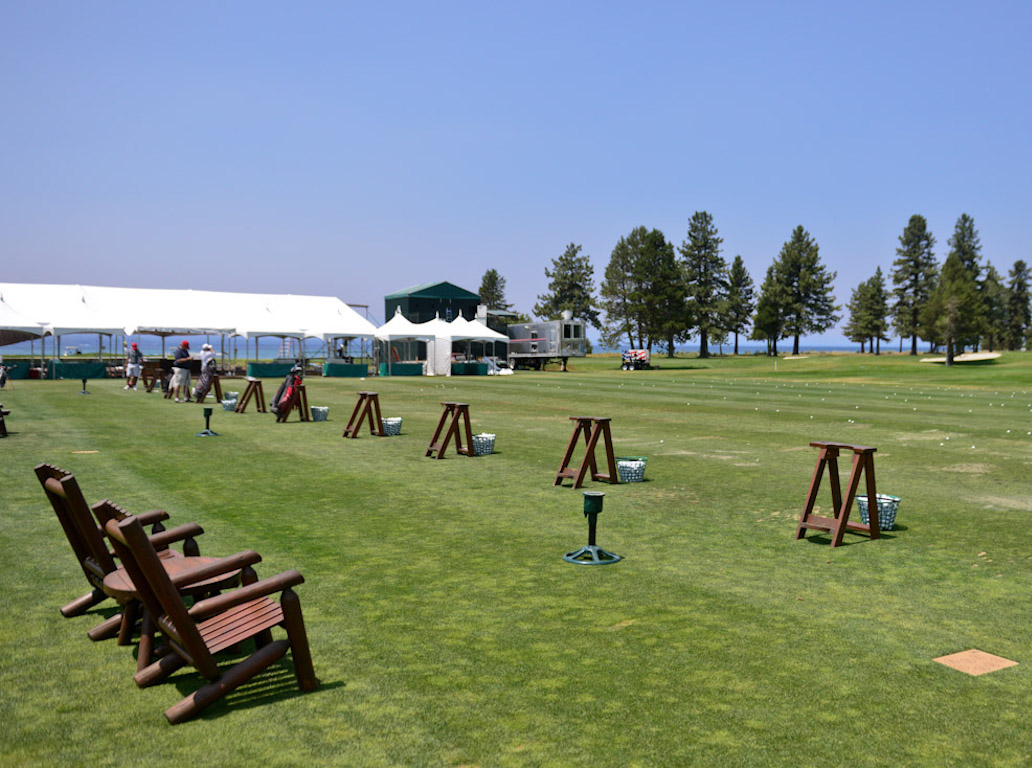
While there are many golfers who barely know where the practice (I don’t like calling it a “driving”) range is located, there are many who find it a place of adventure, discovery and fun. I’m in the latter group, which could be accented by the fact that I make my living in this industry. But then, I’ve always been a “ball beater,” since I was a kid, but now I approach my practice sessions with more purpose and excitement. There’s no question that practice is the key to improvement in anything, so today’s topic is on making practice as much fun as playing.
As long as I can remember, I’ve loved the range, and always embrace the challenge of learning new ways to make a golf ball do what I would like it to do. So, today I’m sharing my “top 5” tips for making practice fun and productive.
- Have a mission/goal/objective. Whether it is a practice range session or practice time on the course, make sure you have a clearly defined objective…how else will you know how you’re doing? It might be to work on iron trajectory, or finding out why you’ve developed a push with your driver. Could be to learn how to hit a little softer lob shot or a knockdown pitch. But practice with a purpose …always.
- Don’t just “do”…observe. There are two elements of learning something new. The first is to figure out what it is you need to change. Then you work toward that solution. If your practice session is to address that push with the driver, hit a few shots to start out, and rather than try to fix it, make those first few your “lab rats”. Focus on what your swing is doing. Do you feel anything different? Check your alignment carefully, and your ball position. After each shot, step away and process what you think you felt during the swing.
- Make it real. To just rake ball after ball in front of you and pound away is marginally valuable at best. To make practice productive, step away from your hitting station after each shot, rake another ball to the hitting area, then approach the shot as if it was a real one on the course. Pick a target line from behind the ball, meticulously step into your set-up position, take your grip, process your one swing thought and hit it. Then evaluate how you did, based on the shot result and how it felt.
- Challenge yourself. One of my favorite on-course practice games is to spend a few minutes around each green after I’ve played the hole, tossing three balls into various positions in an area off the green. I don’t let myself go to the next tee until I put all three within three feet of the hole. If I don’t, I toss them to another area and do it again. You can do the same thing on the range. Define a challenge and a limited number of shots to achieve it.
- Don’t get in a groove. I was privileged enough to watch Harvey Penick give Tom Kite a golf lesson one day, and was struck by the fact that he would not let Tom hit more than five to six shots in a row with the same club. Tom would hit a few 5-irons, and Mr. Penick would say, “hit the 8”, then “hit the driver.” He changed it up so that Tom would not just find a groove. That paved the way for real learning, Mr. Penick told me.
My “bonus” tip addresses the difference between practicing on the course and keeping a real score. Don’t do both. A practice session is just that. On-course practice is hugely beneficial, and it’s best done by yourself, and at a casual pace. Playing three or four holes in an hour or so, taking time to hit real shots into and around the greens, will do more for your scoring skills than the same amount of range time.
So there you have my five practice tips. I’m sure I could come up with more, but then we always have more time, right?
More from the Wedge Guy
- The Wedge Guy: Anyone can be a better wedge player by doing these simple things
- Wedge Guy: There’s no logic to iron fitting
- The Wedge Guy: Mind the gap
- LIKE96
- LEGIT12
- WOW1
- LOL2
- IDHT0
- FLOP1
- OB1
- SHANK7
Instruction
The Wedge Guy: The easiest-to-learn golf basic

My golf learning began with this simple fact – if you don’t have a fundamentally sound hold on the golf club, it is practically impossible for your body to execute a fundamentally sound golf swing. I’m still a big believer that the golf swing is much easier to execute if you begin with the proper hold on the club.
As you might imagine, I come into contact with hundreds of golfers of all skill levels. And it is very rare to see a good player with a bad hold on the golf club. There are some exceptions, for sure, but they are very few and very far between, and they typically have beat so many balls with their poor grip that they’ve found a way to work around it.
The reality of biophysics is that the body moves only in certain ways – and the particulars of the way you hold the golf club can totally prevent a sound swing motion that allows the club to release properly through the impact zone. The wonderful thing is that anyone can learn how to put a fundamentally sound hold on the golf club, and you can practice it anywhere your hands are not otherwise engaged, like watching TV or just sitting and relaxing.
Whether you prefer an overlap, interlock or full-finger (not baseball!) grip on the club, the same fundamentals apply. Here are the major grip faults I see most often, in the order of the frequency:
Mis-aligned hands
By this I mean that the palms of the two hands are not parallel to each other. Too many golfers have a weak left hand and strong right, or vice versa. The easiest way to learn how to hold the club with your palms aligned properly is to grip a plain wooden ruler or yardstick. It forces the hands to align properly and shows you how that feels. If you grip and re-grip a yardstick several times, then grip a club, you’ll see that the learning curve is almost immediate.
The position of the grip in the upper/left hand
I also observe many golfers who have the butt of the grip too far into the heel pad of the upper hand (the left hand for right-handed players). It’s amazing how much easier it is to release the club through the ball if even 1/4-1/2″ of the butt is beyond the left heel pad. Try this yourself to see what I mean. Swing the club freely with just your left hand and notice the difference in its release from when you hold it at the end of the grip, versus gripping down even a half inch.
To help you really understand how this works, go to the range and hit shots with your five-iron gripped down a full inch to make the club the same length as your seven-iron. You will probably see an amazing shot shape difference, and likely not see as much distance loss as you would expect.
Too much lower (right) hand on the club
It seems like almost all golfers of 8-10 handicap or higher have the club too far into the palm of the lower hand, because that feels “good” if you are trying to control the path of the clubhead to the ball. But the golf swing is not an effort to hit at the ball – it is a swing of the club. The proper hold on the club has the grip underneath the pad at the base of the fingers. This will likely feel “weak” to you — like you cannot control the club like that. EXACTLY. You should not be trying to control the club with your lower/master hand.
Gripping too tightly
Nearly all golfers hold the club too tightly, which tenses up the forearms and prevents a proper release of the club through impact. In order for the club to move back and through properly, you must feel that the club is controlled by the last three fingers of the upper hand, and the middle two fingers of the lower hand. If you engage your thumbs and forefingers in “holding” the club, the result will almost always be a grip that is too tight. Try this for yourself. Hold the club in your upper hand only, and squeeze firmly with just the last three fingers, with the forefinger and thumb off the club entirely. You have good control, but your forearms are not tense. Then begin to squeeze down with your thumb and forefinger and observe the tensing of the entire forearm. This is the way we are made, so the key to preventing tenseness in the arms is to hold the club very lightly with the “pinchers” — the thumbs and forefingers.
So, those are what I believe are the four fundamentals of a good grip. Anyone can learn them in their home or office very quickly. There is no easier way to improve your ball striking consistency and add distance than giving more attention to the way you hold the golf club.
More from the Wedge Guy
- The Wedge Guy: Golf mastery begins with your wedge game
- The Wedge Guy: Why golf is 20 times harder than brain surgery
- The Wedge Guy: Musings on the golf ball rollback
- LIKE84
- LEGIT13
- WOW5
- LOL1
- IDHT0
- FLOP4
- OB1
- SHANK8
Instruction
Clement: Stop ripping off your swing with this drill!

Not the dreaded headcover under the armpit drill! As if your body is defective and can’t function by itself! Have you seen how incredible the human machine is with all the incredible feats of agility all kinds of athletes are accomplishing? You think your body is so defective (the good Lord is laughing his head off at you) that it needs a headcover tucked under the armpit so you can swing like T-Rex?
- LIKE0
- LEGIT2
- WOW2
- LOL0
- IDHT0
- FLOP0
- OB0
- SHANK2
Instruction
How a towel can fix your golf swing
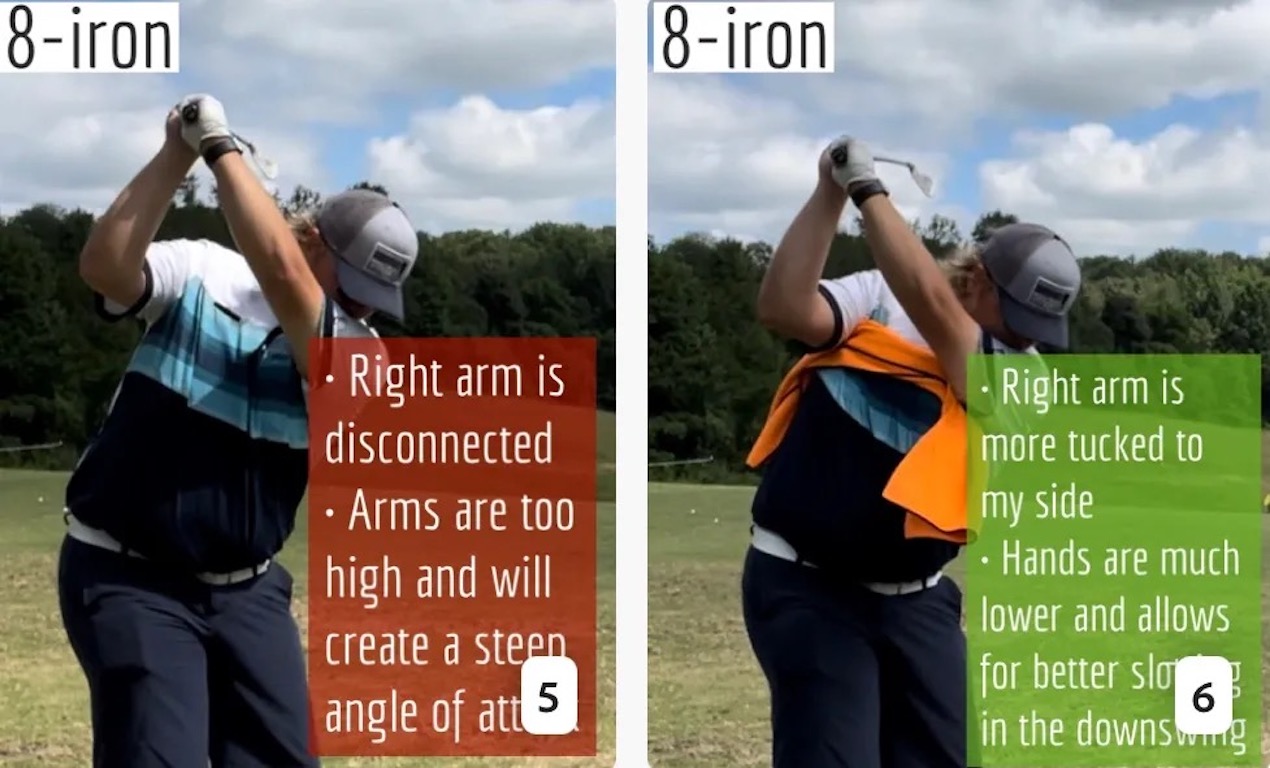
This is a classic drill that has been used for decades. However, the world of marketed training aids has grown so much during that time that this simple practice has been virtually forgotten. Because why teach people how to play golf using everyday items when you can create and sell a product that reinforces the same thing? Nevertheless, I am here to give you helpful advice without running to the nearest Edwin Watts or adding something to your Amazon cart.
For the “scoring clubs,” having a solid connection between the arms and body during the swing, especially through impact, is paramount to creating long-lasting consistency. And keeping that connection throughout the swing helps rotate the shoulders more to generate more power to help you hit it farther. So, how does this drill work, and what will your game benefit from it? Well, let’s get into it.
Setup
You can use this for basic chip shots up to complete swings. I use this with every club in my bag, up to a 9 or 8-iron. It’s natural to create incrementally more separation between the arms and body as you progress up the set. So doing this with a high iron or a wood is not recommended.
While you set up to hit a ball, simply tuck the towel underneath both armpits. The length of the towel will determine how tight it will be across your chest but don’t make it so loose that it gets in the way of your vision. After both sides are tucked, make some focused swings, keeping both arms firmly connected to the body during the backswing and follow through. (Note: It’s normal to lose connection on your lead arm during your finishing pose.) When you’re ready, put a ball in the way of those swings and get to work.
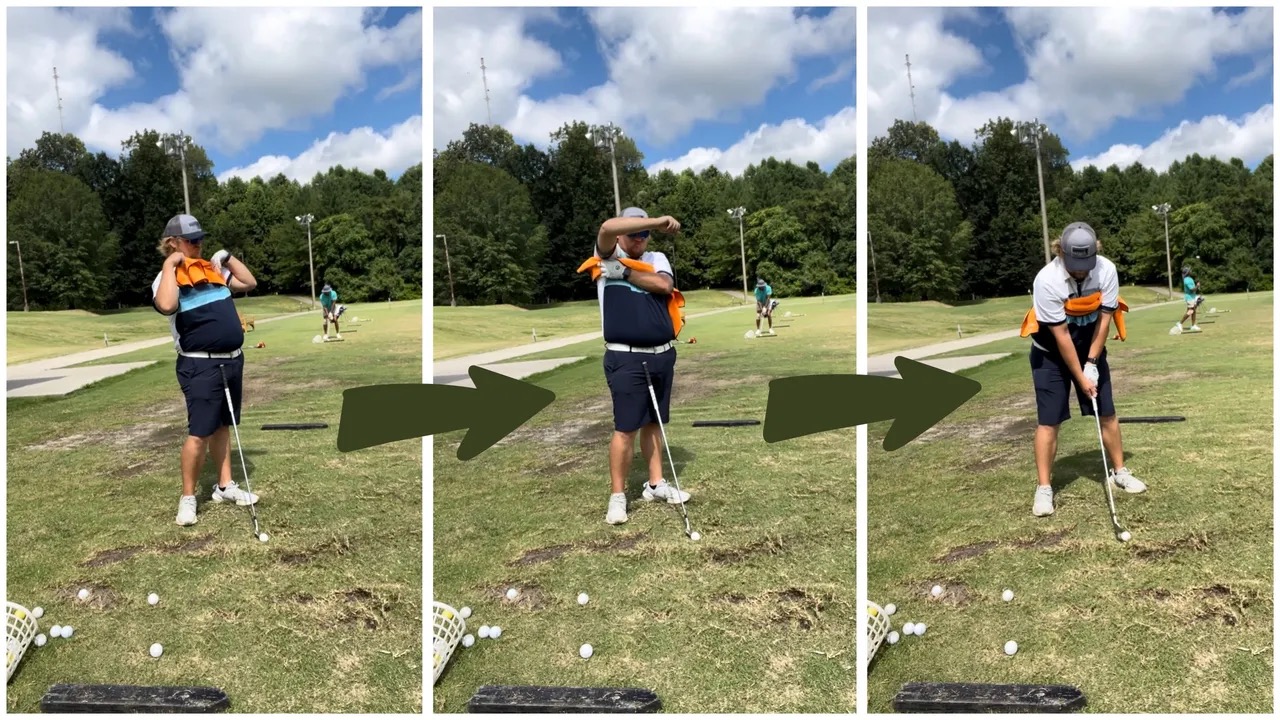
Get a Better Shoulder Turn
Many of us struggle to have proper shoulder rotation in our golf swing, especially during long layoffs. Making a swing that is all arms and no shoulders is a surefire way to have less control with wedges and less distance with full swings. Notice how I can get in a similar-looking position in both 60° wedge photos. However, one is weak and uncontrollable, while the other is strong and connected. One allows me to use my larger muscles to create my swing, and one doesn’t. The follow-through is another critical point where having a good connection, as well as solid shoulder rotation, is a must. This drill is great for those who tend to have a “chicken wing” form in their lead arm, which happens when it becomes separated from the body through impact.
In full swings, getting your shoulders to rotate in your golf swing is a great way to reinforce proper weight distribution. If your swing is all arms, it’s much harder to get your weight to naturally shift to the inside part of your trail foot in the backswing. Sure, you could make the mistake of “sliding” to get weight on your back foot, but that doesn’t fix the issue. You must turn into your trial leg to generate power. Additionally, look at the difference in separation between my hands and my head in the 8-iron examples. The green picture has more separation and has my hands lower. This will help me lessen my angle of attack and make it easier to hit the inside part of the golf ball, rather than the over-the-top move that the other picture produces.
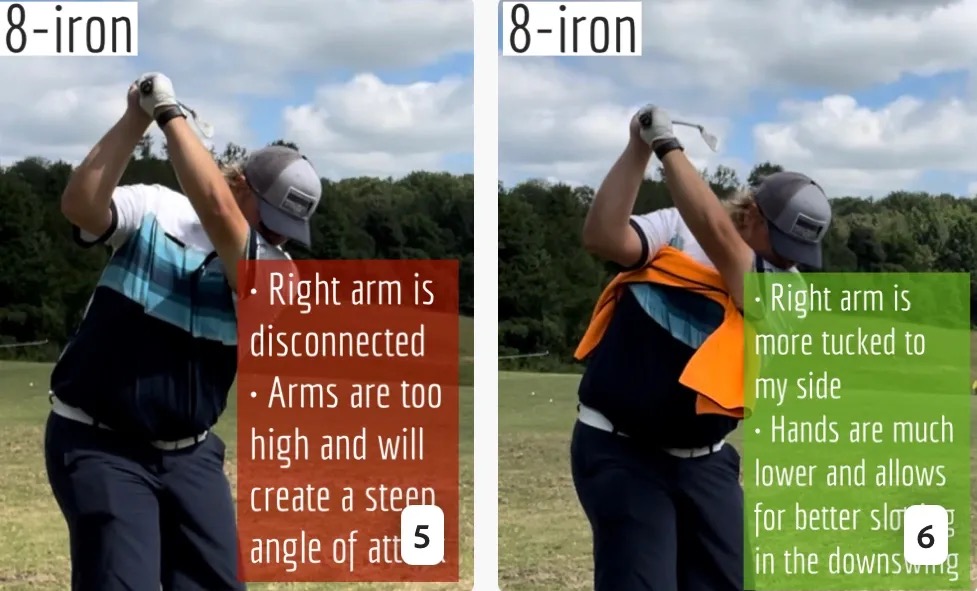
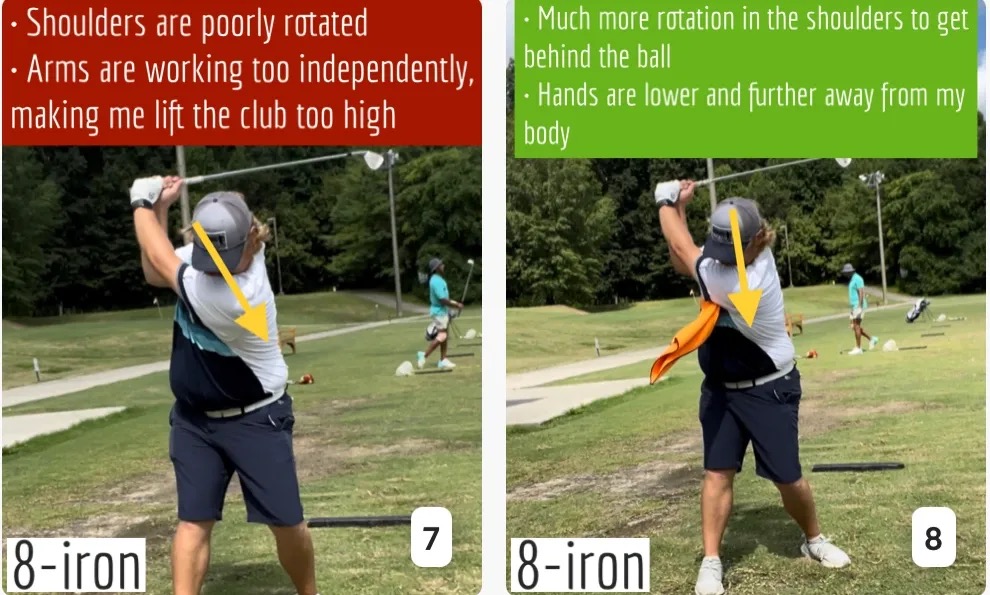
Stay Better Connected in the Backswing
When you don’t keep everything in your upper body working as one, getting to a good spot at the top of your swing is very hard to do. It would take impeccable timing along with great hand-eye coordination to hit quality shots with any sort of regularity if the arms are working separately from the body.
Notice in the red pictures of both my 60-degree wedge and 8-iron how high my hands are and the fact you can clearly see my shoulder through the gap in my arms. That has happened because the right arm, just above my elbow, has become totally disconnected from my body. That separation causes me to lift my hands as well as lose some of the extension in my left arm. This has been corrected in the green pictures by using this drill to reinforce that connection. It will also make you focus on keeping the lead arm close to your body as well. Because the moment either one loses that relationship, the towel falls.
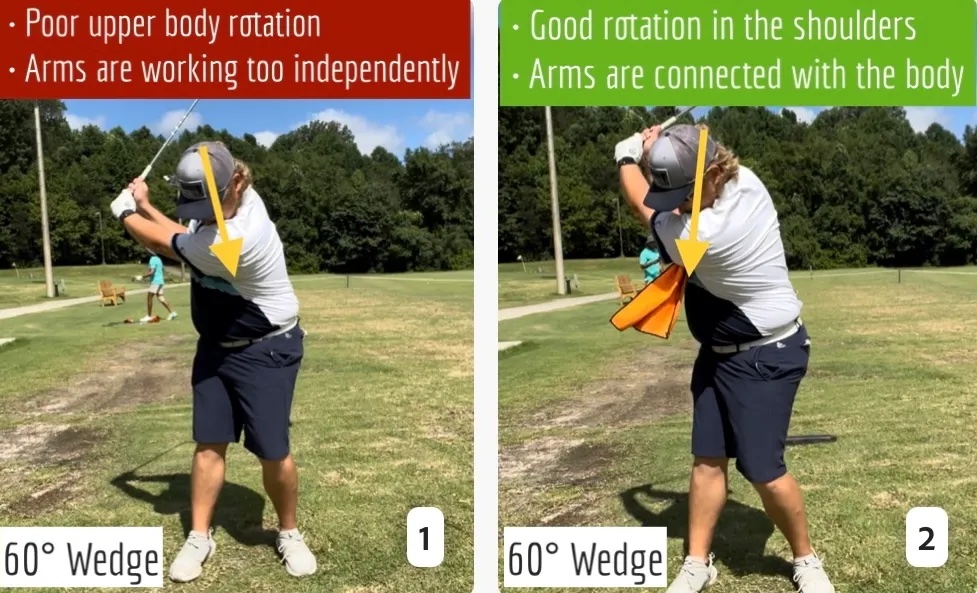
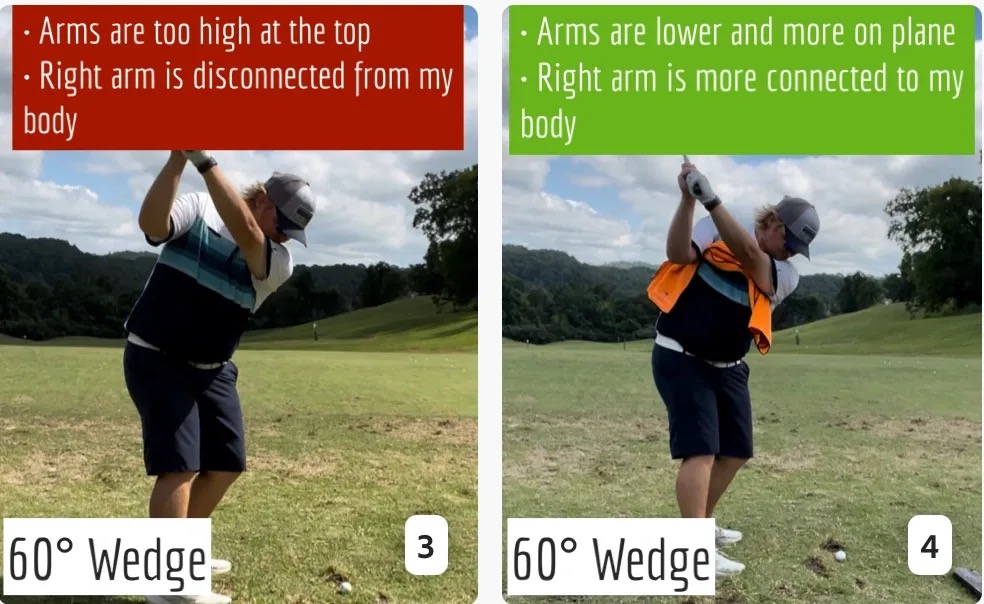
Conclusion
I have been diligent this year in finding a few drills that target some of the issues that plague my golf game; either by simply forgetting fundamental things or by coming to terms with the faults that have bitten me my whole career. I have found that having a few drills to fall back on to reinforce certain feelings helps me find my game a little easier, and the “towel drill” is most definitely one of them.
- LIKE12
- LEGIT2
- WOW2
- LOL0
- IDHT0
- FLOP2
- OB0
- SHANK8
-

 19th Hole4 days ago
19th Hole4 days agoDave Portnoy places monstrous outright bet for the 2024 Masters
-
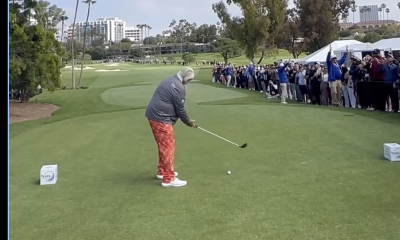
 19th Hole3 weeks ago
19th Hole3 weeks agoJohn Daly stuns fans into silence with brutal opening tee shot on PGA Tour Champions
-
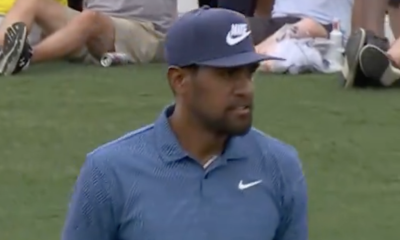
 19th Hole2 weeks ago
19th Hole2 weeks agoThings got heated at the Houston Open between Tony Finau and Alejandro Tosti. Here’s why
-

 19th Hole6 days ago
19th Hole6 days agoTiger Woods arrives at 2024 Masters equipped with a putter that may surprise you
-

 19th Hole2 weeks ago
19th Hole2 weeks agoReport: Tiger Woods has ‘eliminated sex’ in preparation for the 2024 Masters
-

 19th Hole3 weeks ago
19th Hole3 weeks agoCharlie Woods finds it tough going on American Junior Golf Association debut
-

 19th Hole2 weeks ago
19th Hole2 weeks agoAddiction, spinal fusion, and scam artists – Everything Anthony Kim revealed in candid interview with David Feherty
-

 19th Hole1 week ago
19th Hole1 week agoAnthony Kim says doctors told him that he ‘may not have much time left’ ahead of LIV return

























Ned
Oct 19, 2023 at 6:28 am
“Playing three or four holes in an hour or so, taking time to hit real shots into and around the greens” Great idea but isn’t possible at most courses they’re booked up.
Pingback: The Wedge Guy: 3 surefire ways to never get better at golf – GolfWRX
Brandon
Sep 23, 2023 at 9:10 pm
” I don’t let myself go to the next tee until I put all three within three feet of the hole. If I don’t, I toss them to another area and do it again.”
Wow, really, nothing like encouraging slow play.
There are practice greens for this, during a round is not the time.
geohogan
Sep 22, 2023 at 9:57 pm
Tips and check lists… thats all you’ve got.
geohogan
Sep 23, 2023 at 3:17 pm
Does Max Verstappen refer to a check list at 200+ MPH
or did Tiger at top of BS? When consciously directed movement
is not possible eg from top of BS to impact in golf swing
it is only the correct, singular intention that counts.
Bob Jones
Sep 22, 2023 at 10:30 am
Great tips. Numbers 3, 4, and 5, absolutely, though I do #4 mainly around the practice green, and on the course only to practice a shot that a particular green might offer. I think numbers 1 and 2 are productive only if you know what you are doing. Get a lesson and then practice what you learned.